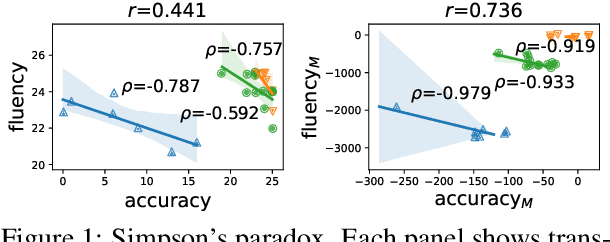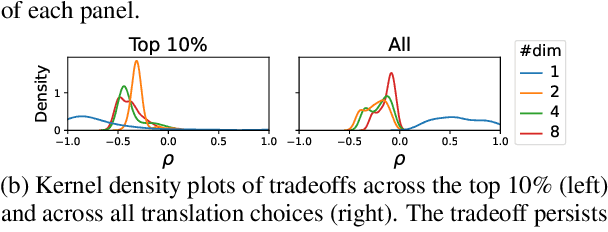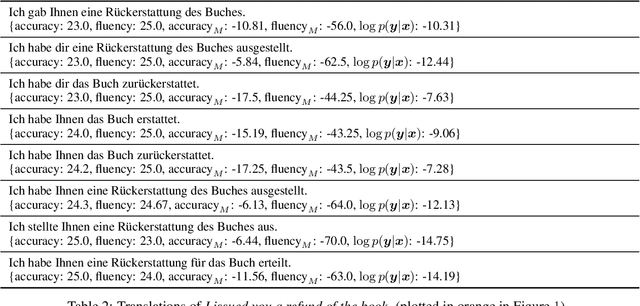Zheng Wei Lim
CaMMT: Benchmarking Culturally Aware Multimodal Machine Translation
May 30, 2025



Abstract:Cultural content poses challenges for machine translation systems due to the differences in conceptualizations between cultures, where language alone may fail to convey sufficient context to capture region-specific meanings. In this work, we investigate whether images can act as cultural context in multimodal translation. We introduce CaMMT, a human-curated benchmark of over 5,800 triples of images along with parallel captions in English and regional languages. Using this dataset, we evaluate five Vision Language Models (VLMs) in text-only and text+image settings. Through automatic and human evaluations, we find that visual context generally improves translation quality, especially in handling Culturally-Specific Items (CSIs), disambiguation, and correct gender usage. By releasing CaMMT, we aim to support broader efforts in building and evaluating multimodal translation systems that are better aligned with cultural nuance and regional variation.
Understanding Cross-Lingual Inconsistency in Large Language Models
May 19, 2025Abstract:Large language models (LLMs) are demonstrably capable of cross-lingual transfer, but can produce inconsistent output when prompted with the same queries written in different languages. To understand how language models are able to generalize knowledge from one language to the others, we apply the logit lens to interpret the implicit steps taken by LLMs to solve multilingual multi-choice reasoning questions. We find LLMs predict inconsistently and are less accurate because they rely on subspaces of individual languages, rather than working in a shared semantic space. While larger models are more multilingual, we show their hidden states are more likely to dissociate from the shared representation compared to smaller models, but are nevertheless more capable of retrieving knowledge embedded across different languages. Finally, we demonstrate that knowledge sharing can be modulated by steering the models' latent processing towards the shared semantic space. We find reinforcing utilization of the shared space improves the models' multilingual reasoning performance, as a result of more knowledge transfer from, and better output consistency with English.
Mufu: Multilingual Fused Learning for Low-Resource Translation with LLM
Sep 20, 2024Abstract:Multilingual large language models (LLMs) are great translators, but this is largely limited to high-resource languages. For many LLMs, translating in and out of low-resource languages remains a challenging task. To maximize data efficiency in this low-resource setting, we introduce Mufu, which includes a selection of automatically generated multilingual candidates and an instruction to correct inaccurate translations in the prompt. Mufu prompts turn a translation task into a postediting one, and seek to harness the LLM's reasoning capability with auxiliary translation candidates, from which the model is required to assess the input quality, align the semantics cross-lingually, copy from relevant inputs and override instances that are incorrect. Our experiments on En-XX translations over the Flores-200 dataset show LLMs finetuned against Mufu-style prompts are robust to poor quality auxiliary translation candidates, achieving performance superior to NLLB 1.3B distilled model in 64% of low- and very-low-resource language pairs. We then distill these models to reduce inference cost, while maintaining on average 3.1 chrF improvement over finetune-only baseline in low-resource translations.
CVQA: Culturally-diverse Multilingual Visual Question Answering Benchmark
Jun 10, 2024



Abstract:Visual Question Answering (VQA) is an important task in multimodal AI, and it is often used to test the ability of vision-language models to understand and reason on knowledge present in both visual and textual data. However, most of the current VQA models use datasets that are primarily focused on English and a few major world languages, with images that are typically Western-centric. While recent efforts have tried to increase the number of languages covered on VQA datasets, they still lack diversity in low-resource languages. More importantly, although these datasets often extend their linguistic range via translation or some other approaches, they usually keep images the same, resulting in narrow cultural representation. To address these limitations, we construct CVQA, a new Culturally-diverse multilingual Visual Question Answering benchmark, designed to cover a rich set of languages and cultures, where we engage native speakers and cultural experts in the data collection process. As a result, CVQA includes culturally-driven images and questions from across 28 countries on four continents, covering 26 languages with 11 scripts, providing a total of 9k questions. We then benchmark several Multimodal Large Language Models (MLLMs) on CVQA, and show that the dataset is challenging for the current state-of-the-art models. This benchmark can serve as a probing evaluation suite for assessing the cultural capability and bias of multimodal models and hopefully encourage more research efforts toward increasing cultural awareness and linguistic diversity in this field.
Simpson's Paradox and the Accuracy-Fluency Tradeoff in Translation
Feb 20, 2024



Abstract:A good translation should be faithful to the source and should respect the norms of the target language. We address a theoretical puzzle about the relationship between these objectives. On one hand, intuition and some prior work suggest that accuracy and fluency should trade off against each other, and that capturing every detail of the source can only be achieved at the cost of fluency. On the other hand, quality assessment researchers often suggest that accuracy and fluency are highly correlated and difficult for human raters to distinguish (Callison-Burch et al. 2007). We show that the tension between these views is an instance of Simpson's paradox, and that accuracy and fluency are positively correlated at the level of the corpus but trade off at the level of individual source segments. We further suggest that the relationship between accuracy and fluency is best evaluated at the segment (or sentence) level, and that the trade off between these dimensions has implications both for assessing translation quality and developing improved MT systems.
Predicting Human Translation Difficulty with Neural Machine Translation
Dec 19, 2023Abstract:Human translators linger on some words and phrases more than others, and predicting this variation is a step towards explaining the underlying cognitive processes. Using data from the CRITT Translation Process Research Database, we evaluate the extent to which surprisal and attentional features derived from a Neural Machine Translation (NMT) model account for reading and production times of human translators. We find that surprisal and attention are complementary predictors of translation difficulty, and that surprisal derived from a NMT model is the single most successful predictor of production duration. Our analyses draw on data from hundreds of translators operating across 13 language pairs, and represent the most comprehensive investigation of human translation difficulty to date.
 Add to Chrome
Add to Chrome Add to Firefox
Add to Firefox Add to Edge
Add to Edge